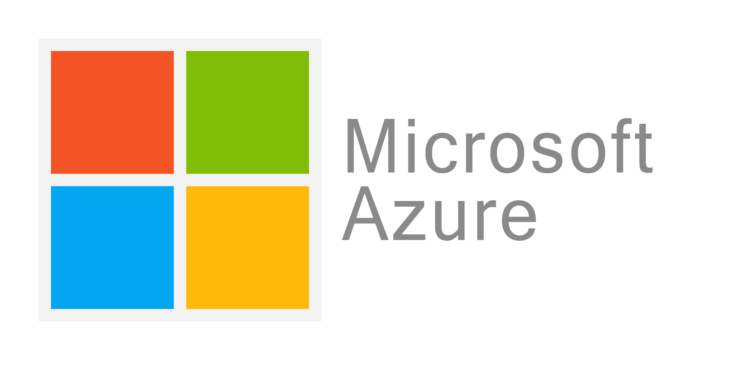Azure Container Storage 2.0 Kubernetes support delivers major performance upgrades in the latest release, making it a stronger option for demanding workloads.
For engineers running Kubernetes workloads on Azure—or even for those evaluating cloud storage strategies—this release aims to shift standard expectations.
At its core, ACS 2.0.0 focuses on local NVMe integration, architectural simplification, and eliminating extra service fees beyond the underlying storage. These changes don’t just polish the edges—they reshape what’s possible for stateful workloads in Kubernetes clusters, especially in AI, databases, and high-throughput systems.
NVMe Integration: Speed Unlocked
The most eye-catching feature in ACS 2.0.0 is the tight integration with local NVMe storage, leveraged through disk striping. In performance benchmarks published by Microsoft, ACS with NVMe striping offers:
-
Roughly 7× more IOPS (input/output operations per second)
-
About 4× lower latency
These gains are particularly impactful when running databases such as PostgreSQL under Kubernetes. In tests mimicking real-world deployment patterns, ACS 2.0.0 delivered ~60% more transactions per second and 30% or more latency reductions compared to earlier versions.
For AI use cases—especially with large language models or heavy GPU workloads—the improvements become even more relevant. A new feature enables node-local caching of model artifacts, reducing repetitive network transfers when pods spin up again. Microsoft’s “KAITO” operator figures into this optimization, caching model data on NVMe inside GPU nodes, resulting in faster deployment and better scaling under load.
Thus, for applications sensitive to I/O bottlenecks—whether AI models, real-time analytics, or low-latency databases—these throughput and latency improvements can translate directly to measurable user experience gains.
Simplified Architecture: Cleaner, Leaner, More Reliable
Beyond raw performance, ACS 2.0.0 also slashes complexity from its internal design. Earlier versions of ACS used multiple controllers, node daemons, and a custom resource layer (StoragePool) to manage persistent volumes. That design required manual setup and increased the chances of configuration errors.
With version 2.0.0, Microsoft:
-
Removed the StoragePool abstraction altogether
-
Shifted user interaction to standard Kubernetes primitives like StorageClasses and PVCs
-
Consolidated multiple controllers into a single lightweight operator + CSI driver model
-
Removed bundled services (Prometheus for metrics, cert-manager for webhooks) in favor of exposing metrics through existing standard endpoints and letting existing monitoring systems handle them
-
Simplified namespace layout and removed unnecessary dependencies that could conflict with cluster policies
The result is a storage stack that fits more cleanly into existing Kubernetes setups without forcing users to rearchitect around ACS. It’s leaner, easier to manage, and less likely to cause collisions with monitoring or security tooling.
Another important move: ACS now supports deployments even on small clusters (including one- or two-node setups), which were previously out of reach due to resource constraints imposed by prior ACS versions.
Cost Model Changes: Eliminating Hidden Fees
Perhaps just as important as performance is the shift in how Microsoft bills ACS usage. With version 2.0.0:
-
Microsoft has eliminated per-pool service fees beyond the cost of the underlying storage.
-
That means users now pay only for the raw storage resources (capacity, IOPS, etc.), not for ACS orchestration or metadata overhead.
-
The change applies both to the managed Azure ACS offering and to the open-source version for ACS on VMs.
This update lowers the barrier to adoption for large-scale workloads and is especially meaningful for cost-conscious architects running high volumes of data or bursts in usage.
Open-Source & Community Strategy
In a move that underscores its commitment to transparency and ecosystem growth, Microsoft has published the core components of ACS 2.0.0 as open source. This includes:
-
The NVMe CSI driver logic
-
The operator/controller logic
-
Ephemeral volume handling
By opening the code, Azure invites community contributions and enables deployment of ACS on Azure VMs or self-managed Kubernetes clusters. This flexibility means users aren’t boxed into a single managed offering—they can adopt portions of ACS or extend it to their custom environments.
It also positions ACS as a living project, evolving with community feedback and third-party optimizations, rather than a locked service stack.
Competitive Landscape & Differentiation
Against alternatives from AWS (EBS / EFS) or Google Cloud (Persistent Disk / Filestore), ACS’s NVMe strategy stands out. Many competitors rely on networked volumes or centralized storage, which adds latency and potential bottlenecks under heavy load.
ACS 2.0’s strategy is to push storage closer to compute, letting each node harness its own performance capacity. This model fits particularly well for:
-
AI/ML workloads
-
Edge computing clusters
-
High-throughput streaming or analytics
-
Real-time databases in Kubernetes
By combining local performance with a simplified surface integration, ACS 2.0 stakes a compelling position in the cloud storage wars.
Risks & Considerations
Of course, no architecture is perfect. Some concerns and trade-offs to keep in mind:
-
Data locality / balancing — with data spread over node-local storage, replication and data rebalancing become more critical in case of node failure.
-
Persistence guarantees — how ACS handles node failures or disk corruption will matter in production critical systems.
-
Ecosystem fit — while simplified, ACS must still integrate cleanly with backup, snapshot, and disaster recovery tools.
-
Open-source parity — the open-source version must track with the managed version and maintain reliability.
-
Adoption friction — existing clusters may not easily migrate without data migrations or downtime.
Outlook & Takeaways
By going GA with ACS 2.0.0, Microsoft is pushing a bold message: cloud-native storage has to be both powerful and simple. The company is throwing CPU/GPU-proximal NVMe into the mix, stripping architectural complexity, and removing cost friction.
This Azure Container Storage 2.0 Kubernetes upgrade is especially valuable for AI, database, and analytics-heavy clusters.
For Kubernetes operators, especially those running I/O-intensive workloads or AI/ML pipelines, the update is one to evaluate aggressively. Those latency gains, lower costs, and simplified stack might justify migration or trials earlier than you anticipated.
This release also signals the direction of cloud infrastructure: software abstraction over hardware power. As compute gets faster and cheaper, vendors who can match that with lean, high-performance storage abstractions will win the new race.


















